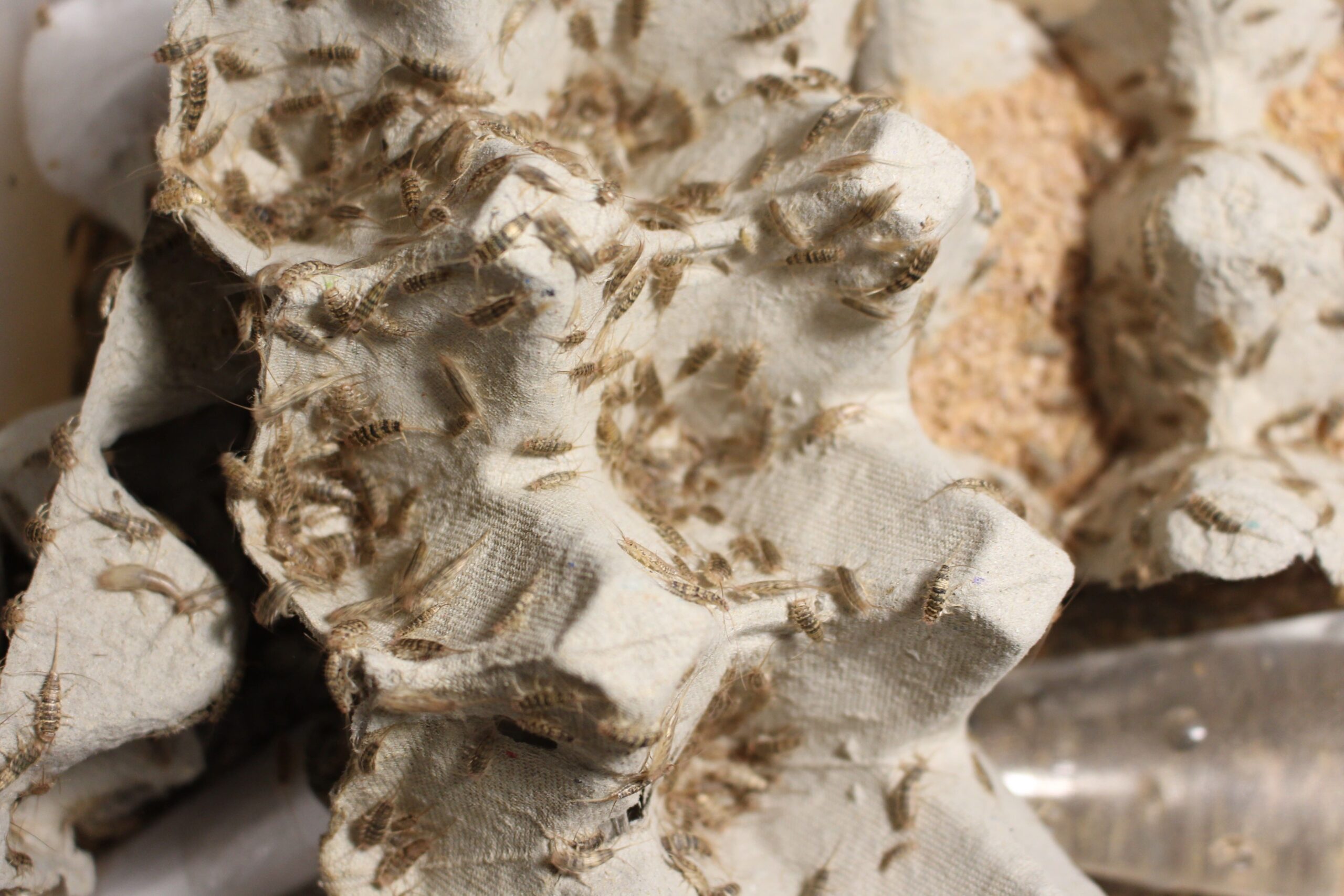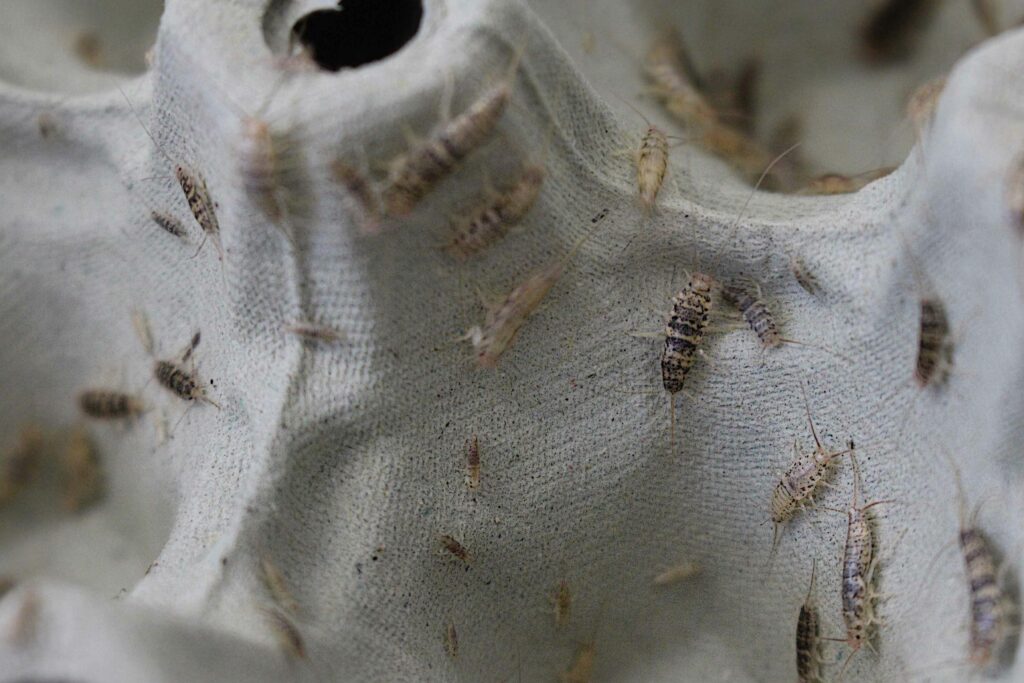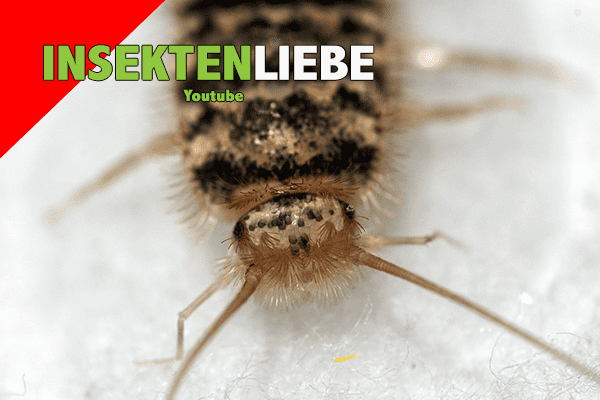Preface:
Did you know that firebrats (Thermobia domestica) undergo the most moulting stages? From the first stage to death, and this can take up to 5 years, there can be up to 60 moults!
General:
Firebrats are among the oldest animals on earth. Adult animals reach a body size of 12mm. They love sugar and hate light and are as threatening to the book collections in libraries as fire or the bookworm. The firebrat (Thermobia domestica) is only one representative of the 425 different and all of them thermophilic fish species worldwide. Zygentoma is the name given to the order of insects that have existed for about 300 million years. In our latitudes, if you sleepily stagger into the bathroom in the morning and switch on the light, you will occasionally come across a silverfish (Lepisma saccharina).
You should not panic directly at the sight of a silverfish, but rather be glad that this rarity lives with you. Among other things, they eliminate mould spores and dust mites and are therefore very useful companions in poorly ventilated bathrooms. Only when the stocking level rises sharply, 50 animals and more, should you worry about your own health. Not because the silverfish are disease carriers, but because it is a sign of increased mould.
Occasionally occurring silverfish in the bathroom or kitchen are harmless. An extreme infestation can indicate a moisture problem and mould infestation. The silverfish are only a warning signal here. They even alleviate the mould infestation, as they feed on these fungi. They also eat house dust mites, which can cause allergies in humans. Therefore they are also to be considered as beneficial organisms. They are not disease carriers; from a hygienic point of view, control is not necessary.
Breeding:
I use plastic boxes as breeding containers. Depending on how large and comprehensive the breeding should be, the size must be adjusted. Since the animals tolerate a very high stocking density and do not show any internal aggressions, one can choose a smaller container.
For walking surfaces and surface enlargement it is best to choose egg cartons which are stacked in the breeding box. The Firebrats (Thermobia domestica) can hide in them and you can achieve a higher stocking density per breeding container.
It is important to keep the high temperature of 35-40 °C. Despite constant high temperatures the development time takes 3-6 months. Below 30 °C no reproduction takes place anymore! Therefore I have installed a 7W heating mat under the box. This provides day and night for constant 40 °C in the breeding box.
The electricity costs for the breeding, if the heating mat runs day and night, are 17,88 EUR per year and therefore absolutely worthwhile, if you keep a few mantids at home and have to feed furnace fishes more often. For comparison, a cricket box with about 4g of firebrats costs 3.50 – 4.00 EUR in the trade. With a breeding box like the presented one you can breed 40 – 100g of firebrat per year. (The average electricity price in 2017 is 29.16 C/kWh)
As the females like to lay the eggs in cotton wool, it is best to add a few cotton wool balls as a substrate. I tear up 4-5 cotton wool pads and thus offer them enough possibilities to lay the eggs.
Food:
I do not feed moist food and therefore have no problems with mites. As food I use exclusively:
Fish flake food
Wheat bran
Brewer’s yeast
Chick starter
They are not particularly fussy and can digest cellulose in something that nobody from cow to caterpillar can. This substance is the main component of plant cell walls and is made up of hundreds of interlinked sugar units. The digestive tract of the cow and many other animals is home to bacteria that break down cellulose into its individual components and therefore make it usable for the host. Firebrats, on the other hand, do not need help in breaking down plant food. They produce what is otherwise reserved for certain species of bacteria and fungi, celluloses and cellubiases, enzymes with which they successfully process and digest the long-chain cellulose. Therefore, they can feed on cellulose-containing materials such as cotton or even paper. So when the food is used up, there is no need to panic immediately as they can also feed on the egg cartons brought in for a while.
The firebrat absorbs the moisture exclusively through the air. Therefore it is essential to integrate a container with water in the breeding box. This should be covered with a nylon stocking or fabric, so that no ovenfish can get in. I myself use a vase which I put filled with water into the breeding box. From where I close the opening with a piece of toilet paper. Attention! The population will collapse if there is no water available!
The humidity should be balanced so that there is no condensation water inside the breeding box. As soon as condensation water forms, the small oven fish drown in it and the food soon starts to go mouldy. This can be easily controlled by a larger ventilation area which is best placed on the top of the lid.
Feeding the Firebrats to other animals
Especially in the mantodea scene, firebrat are indispensable as food animals. They do not represent any danger for the fosterlings and are a tasty and easily digestible treat due to their soft body. Also due to their body size of up to 12 mm they are a perfect link between feeding Drosophila hydei and goldflies. They can survive for weeks in the terrarium and can therefore also be fed on stock. For me personally, firebrats are one of my main food animals after Drosophilas.





